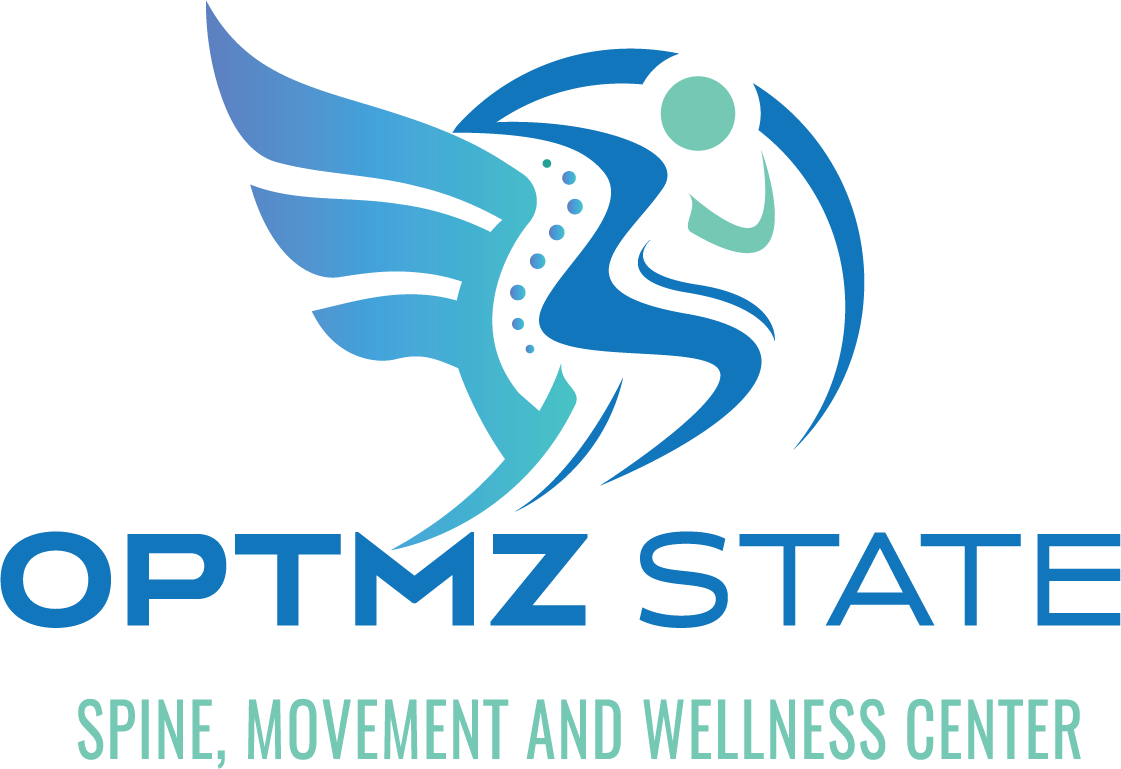If you've ever experienced pain from an injury, you know how it can impact your daily life. Tracy chiropractors specialize in managing common injuries like whiplash, lower back pain, and sports-related issues. They employ tailored treatment plans to tackle the underlying causes of your discomfort. By addressing these injuries effectively, they not only promote recovery but also help prevent future problems. You might be surprised to learn about some lesser-known injuries they can assist with, which could be affecting you more than you realize.
Whiplash Injuries
Whiplash injuries often occur during rear-end collisions, where the sudden jolt causes your head to snap back and forth. This rapid movement can strain the muscles and ligaments in your neck, leading to pain and discomfort that can linger for weeks or even months.
You might experience symptoms like stiffness, headaches, and a reduced range of motion, making it challenging to perform daily activities.
One of the first things you'll want to do after a whiplash injury is to seek treatment. Chiropractors specialize in diagnosing and managing whiplash through non-invasive methods. They'll assess your condition, focusing on your spine and neck alignment, and develop a personalized treatment plan aimed at relieving your pain and restoring your mobility.
Chiropractic adjustments are often a key part of your treatment. These adjustments can help realign your spine and reduce muscle tension.
Your chiropractor may also incorporate other techniques, such as massage therapy or cold laser therapy, to promote healing and alleviate discomfort. Additionally, they may recommend specific exercises to strengthen your neck muscles and improve your range of motion.
It's essential to monitor your symptoms closely. If you notice persistent pain or new symptoms arising, keep your chiropractor informed.
Early intervention can lead to better outcomes, allowing you to return to your normal activities as quickly as possible. By taking proactive steps, you can effectively manage your whiplash injury and enhance your recovery process.
Lower Back Pain
After dealing with whiplash injuries, you might start to notice other discomforts, such as lower back pain. This common issue can stem from various factors, including poor posture, prolonged sitting, or even previous injuries.
Your lower back supports much of your body's weight and is essential for movement, so when it's out of alignment, you can experience significant discomfort.
If you're frequently bending, lifting, or even sitting for extended periods, you might find that your lower back starts to ache. It's important to pay attention to these signals, as ignoring them can lead to more severe issues down the line.
A chiropractor can help you identify the root cause of your pain and develop a personalized treatment plan that addresses both the symptoms and underlying problems.
Chiropractic care often includes spinal adjustments, which can realign your spine, reduce pressure on nerves, and improve overall function.
In addition to adjustments, your chiropractor may suggest exercises and stretches to strengthen your core and improve flexibility, which can be crucial for preventing future pain.
Don't let lower back pain interfere with your daily life. Seeking professional help not only alleviates your current discomfort but also empowers you to take proactive steps toward a healthier back.
Remember, the sooner you address the issue, the better your chances are of a full recovery and maintaining a pain-free lifestyle.
Sports Injuries
When you're active in sports, injuries can happen unexpectedly.
Whether it's a sprain, strain, or a more serious issue, understanding common sports injuries and how to treat and prevent them is essential for your performance and overall health.
Let's explore these injuries and the best ways to keep you in the game.
Common Sports Injuries
In the world of athletics, sports injuries are a common concern for both amateur and professional athletes alike. You might find yourself dealing with issues like sprains, strains, and fractures after a game or intense training session.
Ligament tears, especially in the knees, often occur in sports that involve sudden stops or changes in direction, like soccer or basketball. If you're into contact sports, you could experience shoulder injuries or concussions, which can be serious.
Even repetitive motions in sports like swimming or tennis can lead to overuse injuries, such as tendonitis or bursitis. Don't forget about the importance of your back; lower back pain is frequently reported among athletes, especially those involved in weightlifting or gymnastics.
Recognizing these common sports injuries is vital for your overall performance and health. Identifying symptoms early can help you prevent further complications or prolonged recovery times.
Treatment and Prevention Techniques
To effectively manage sports injuries, understanding both treatment and prevention techniques is essential.
When it comes to treatment, you should consider a multi-faceted approach. Chiropractic adjustments can realign your spine and improve mobility, while soft tissue therapies can reduce pain and inflammation. Rest, ice, compression, and elevation (RICE) are critical for immediate care. Always listen to your body; if something feels off, don't push through the pain.
Preventing sports injuries starts with proper training and conditioning. Make sure you warm up before any activity and cool down afterward. Stretching is key for flexibility, so incorporate it into your routine. Invest in the right gear—supportive shoes and protective equipment can make a big difference.
Additionally, cross-training can help to balance muscle development and reduce the risk of overuse injuries.
Finally, pay attention to signs of fatigue or discomfort. Taking breaks and allowing your body to recover is just as important as the workout itself.
Sciatica
Sciatica affects approximately 40% of people at some point in their lives, causing discomfort that can considerably impact daily activities. This condition occurs when the sciatic nerve, which runs from your lower back down through your legs, gets pinched or irritated. You might experience sharp pain, tingling, or numbness that radiates from your lower back to your buttocks and down one leg. Understanding sciatica's symptoms and causes is vital to finding relief.
Common causes include herniated discs, spinal stenosis, or muscle spasms. Poor posture and sedentary lifestyles can exacerbate these issues, leading to increased tension on the sciatic nerve. If you're experiencing sciatica, it's important to consult with a chiropractor. They can provide a thorough assessment and create an individualized treatment plan.
Chiropractic care for sciatica often includes spinal adjustments aimed at relieving nerve pressure and restoring proper alignment. You may also benefit from therapeutic exercises that strengthen your back and core muscles, improving your overall posture and flexibility.
Additionally, chiropractors may suggest lifestyle changes to help prevent future flare-ups, such as regular physical activity and ergonomic adjustments at your workspace.
Remember that early intervention is important. Ignoring the symptoms can lead to chronic pain or further complications. So, if you're dealing with sciatica, don't hesitate to reach out to a chiropractor in Tracy. They're here to help you regain control over your life by addressing the root causes of your discomfort and guiding you through a recovery plan tailored to your needs.
Neck Pain
Neck pain can stem from various causes, including poor posture, stress, or injury.
You might be surprised by the effective chiropractic treatment options available to relieve your discomfort.
Additionally, learning prevention tips and techniques can help you maintain a healthier neck in the long run.
Causes of Neck Pain
A significant number of people experience neck pain at some point in their lives, often due to a variety of factors. One common cause is poor posture, especially if you spend long hours hunched over a computer or looking down at your phone. This can strain the muscles and ligaments in your neck, leading to discomfort.
Another major factor is injury. Accidents, falls, or sports-related incidents can result in whiplash or other neck injuries that cause significant pain. Additionally, repetitive motions, like those from certain occupations, can contribute to neck strain over time.
Stress can also play a role. When you're stressed, you tend to tighten your neck and shoulder muscles, which can create tension and pain.
Moreover, age-related issues, such as degenerative disc disease, can lead to chronic neck pain as the structures in your neck wear down.
In some cases, medical conditions like arthritis or herniated discs can cause neck pain too. Understanding these causes can help you identify what might be contributing to your discomfort and guide you toward seeking appropriate solutions.
Chiropractic Treatment Options
Finding relief from neck pain often leads individuals to explore various treatment options, and chiropractic care is a popular choice. Chiropractors focus on diagnosing and treating neck pain through hands-on manipulation and adjustment techniques. They work to realign the spine and improve overall function, helping to alleviate discomfort and restore mobility.
One common approach is spinal manipulation, which involves applying controlled force to specific vertebrae. This can relieve pressure on nerves and reduce inflammation.
Additionally, chiropractors may employ other methods, such as mobilization techniques, to gently stretch and strengthen the neck muscles.
Therapeutic exercises play a vital role in the treatment plan as well. Chiropractors often guide you through exercises designed to increase flexibility and strengthen the neck and surrounding muscles, promoting long-term relief.
Soft tissue therapies, like massage, can also be beneficial. These techniques help reduce muscle tension and improve blood circulation, aiding in the healing process.
Prevention Tips and Techniques
To keep neck pain at bay, incorporating preventive measures into your daily routine is essential.
Start by maintaining good posture, whether you're sitting at a desk or using your phone. Keep your shoulders relaxed and your head aligned over your spine. Set reminders to check your posture if you tend to slouch.
Next, take frequent breaks from activities that strain your neck, like prolonged computer use. Stand up, stretch, and move around every 30 minutes. Simple neck stretches can also help; gently tilt your head to each side and hold for 15 seconds to relieve tension.
When sleeping, choose a supportive pillow that keeps your neck aligned with your spine. Try sleeping on your back or side rather than your stomach, which can twist your neck awkwardly.
Finally, engage in regular exercise, focusing on strength and flexibility. Activities like yoga or Pilates can enhance your neck's stability and reduce the risk of pain.
Shoulder Injuries
Shoulder injuries can greatly impact your daily activities, from lifting a grocery bag to reaching for an item on a high shelf. These injuries can stem from various causes, including sports, accidents, or even poor posture during daily tasks. You might experience pain, stiffness, or limited range of motion, which can hinder your ability to perform routine movements.
Common shoulder injuries include rotator cuff strains, shoulder dislocations, and tendinitis. If you've ever felt a sharp pain when raising your arm or experienced a dull ache that radiates down your arm, you might be dealing with one of these conditions. Ignoring these symptoms can lead to further complications, so it's vital to address them promptly.
Chiropractic care can play a significant role in managing shoulder injuries. A chiropractor can assess your condition and develop a personalized treatment plan tailored to your needs. This may include spinal adjustments, soft tissue therapy, and stretching exercises. By targeting the underlying issues, chiropractic care can help improve your shoulder's mobility and alleviate pain.
In addition to professional treatment, you can also take proactive steps at home. Applying ice to the affected area can reduce inflammation, while gentle stretching can help maintain flexibility.
Most importantly, listen to your body—if a movement causes pain, don't push through it. Taking care of your shoulders now will pay off in the long run, allowing you to regain functionality and enjoy your daily activities without discomfort.
Repetitive Strain Injuries
Repetitive strain injuries (RSIs) can develop from performing the same motion repeatedly over time, often affecting the muscles, tendons, and nerves. You might experience these injuries if you spend long hours typing, knitting, or engaging in any activity that requires the same repetitive motions. Symptoms can include pain, swelling, stiffness, and a reduced range of motion, making daily tasks increasingly difficult.
As you push through the discomfort, you may notice that the pain intensifies and doesn't go away with rest. This is your body signaling that it needs attention. Ignoring these signs can lead to chronic issues that may require long-term treatment. It's important to address RSIs early to prevent further complications.
Chiropractors in Tracy specialize in managing these injuries by focusing on alignment and function. They can assess your posture, identify any imbalances, and provide targeted adjustments to relieve pressure on affected areas.
Additionally, they may recommend specific exercises and stretches to strengthen the muscles and improve flexibility, helping to prevent future injuries.
You'll find that incorporating ergonomic practices into your routine, such as adjusting your workspace and taking regular breaks, can also greatly reduce your risk of developing RSIs.
Conclusion
To sum up, if you're dealing with any of these common injuries, Tracy chiropractors can help you find relief and regain your mobility. Their personalized treatment plans and hands-on techniques are designed to address your specific needs, whether it's whiplash, lower back pain, or sports injuries. Don't let discomfort hold you back—reach out to a chiropractor today and take the first step toward better health and well-being. Your path to recovery starts here!



